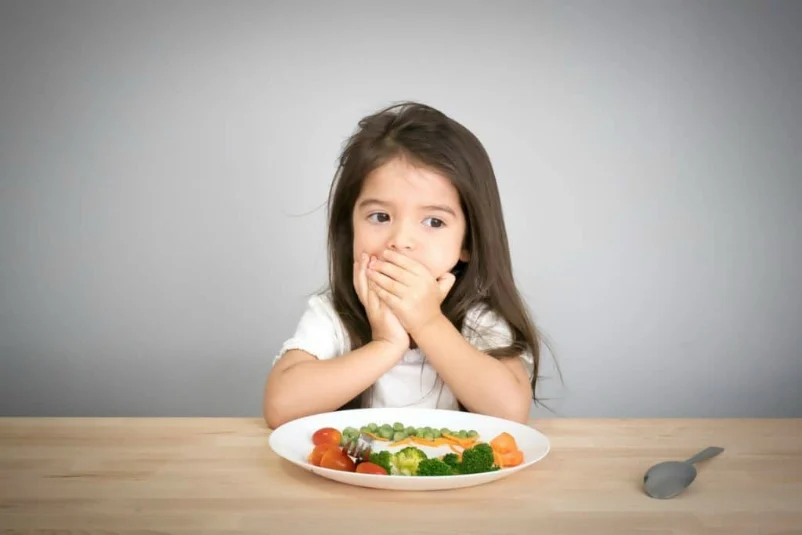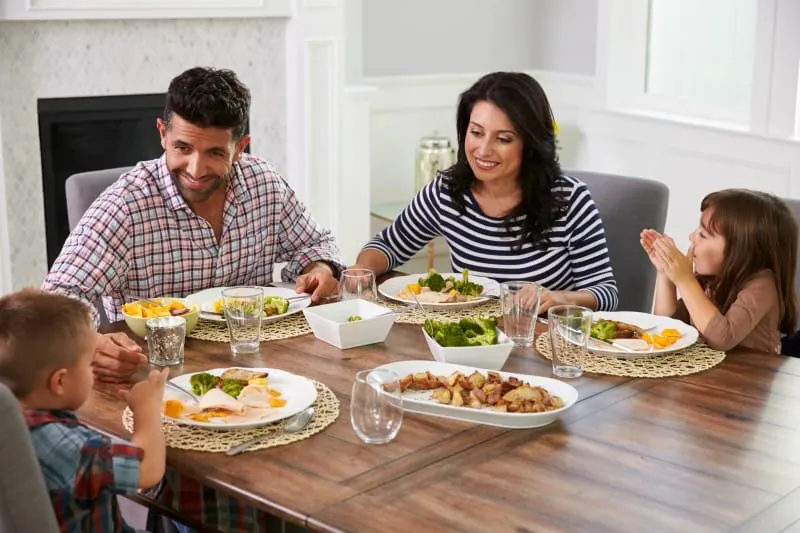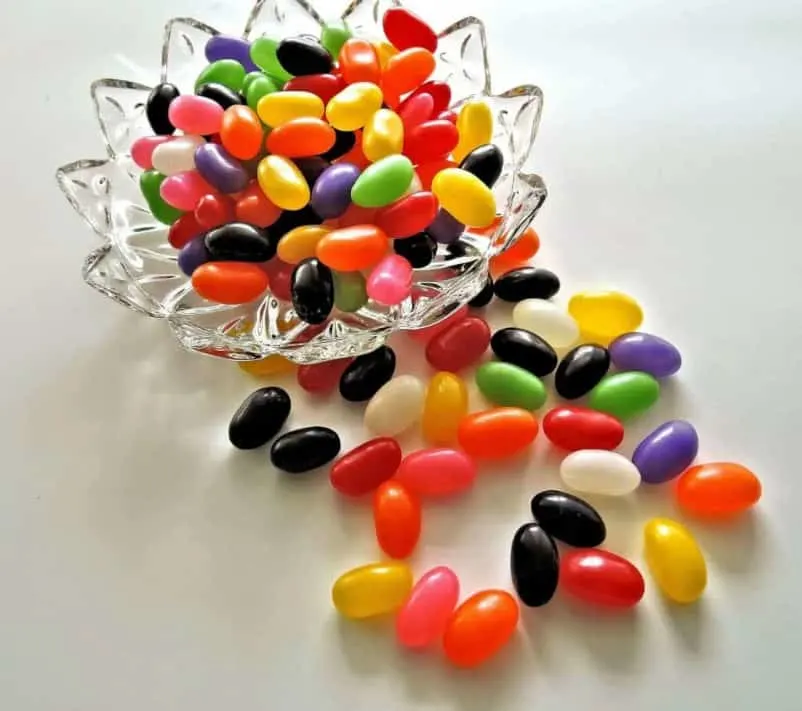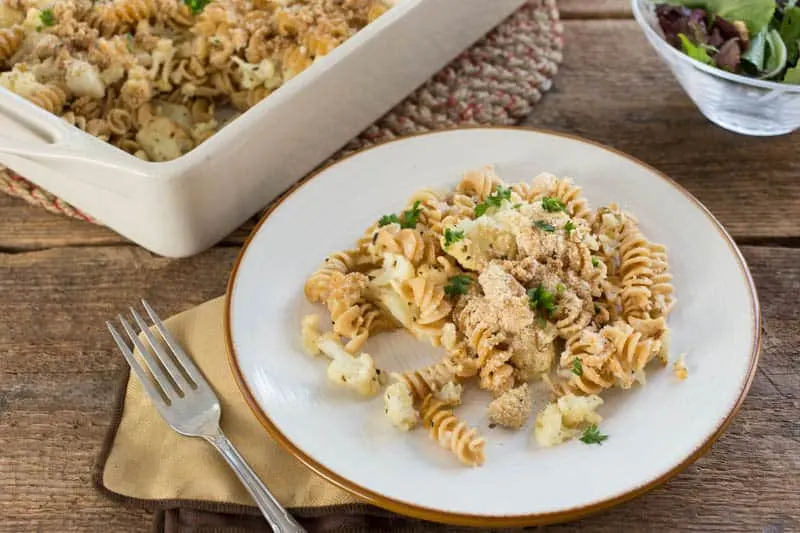Do you stress about holiday foods and how to manage them for yourself and/or your kids? We can help! Here are our tips on how to handle treats during the holidays.

How to Handle Treats During the Holidays
We’re in it. The holiday season is upon us. The time of parties, excess, and lots and lots of rich and delicious food. For some of us, this is a time of fun and decadence, but for others it can be stressful. It can bring up anxieties around food, internal deal-making, binging, or conversely self-deprivation. It can also lead to struggles with our kids as they too are surrounded by more rich and special foods than usual.
But it doesn’t have to be stressful or hard! Here are some thoughts on how to handle treats during the holiday season so that you and your family can fully enjoy the celebrations.

Don’t Do Deprivation
One of our first instincts, when we are concerned about excess, is to shut it all down and declare the tempting foods “off limits” or to set very strict rules on quantity. This is a natural response (and one I often have to face in myself), but unfortunately it is likely to either backfire or leave you (or your kids) feeling unsatisfied and even resentful.
The reason for this is that when we deprive ourselves of something, we are much more likely to feel the lack of it, to continue to think about that thing we didn’t have, to feel the loss.
Once that loss is felt, then the need to fill that space arises. It might be with an alternative food, it might be by “breaking the rules” and having it anyway (only then to be racked with guilt), or it might be by filling that emotional space with resentment or anger (and in the case of kids, tantrums).
In the end, none of this is going to feel good to anyone involved, so instead we need to try to find a more balanced approach.

A Little Perspective
The other day I saw a photograph of a white board at someone’s gym. It reminded people that there are about 30 days from Thanksgiving to New Years Day (it changes a bit each year). Out of those, between 3 and 5 are big treat days (assuming Thanksgiving; 1-2 days of latkes and donuts for Hannukah and/or 1-2 days for Christmas, if you celebrate; and 1-2 days for New Years Eve and New Years Day).
That means that about 25 days are normal days when normal eating happens. Even if you are SUPER social and go to parties every weekend, you still are likely only adding a few more days into the mix and the vast majority of days will be normal.
What does this mean? It means that these few days in the year are not going to make or break anyone – neither your kids nor yourself. So, if we’re clear that these are exceptional days, rather than normal days, and that they are times of celebration, a little extra isn’t the worst thing ever, especially if the other days are balanced and healthy.
So, if we aren’t doing deprivation and we are keeping things in perspective, then the question remains: how to handle treats during the holidays?

Step 1: Set Expectations
It’s much easier to play the game if you know the rules. This goes for Monopoly, but it is also true of situations where conflicts between you and your kids may arise over food.
So take a few minutes to decide what the expectations in your family are going to be. This can be done by you and your partner (if you are partnered) or as a family – it could even be a topic for a family dinner conversation.
The goal here is to clearly set the guidelines so that you know that everyone involved understands and is on board, and then stick with it.
Here are some possible options. It is important to note that no option is better than any another. You can also create your own version. Hopefully, though, these will help you to get started.
A tip: in order to solidify buy-in, I always like to encourage parents to model the behavior you are hoping for. So, if you set limitations for your kids, try to stick with those same limitations yourself.

At parties, anything is possible
You and your kids agree that for most days during this season, your family will stick to your standard eating expectations, but that when it comes to special events like holiday parties or family gatherings around the holidays, the rules will relax and people can just enjoy whatever they’d like to enjoy.
As a parent, the trick with this one is that you need to be willing to relinquish control and trust that your kids will be able to handle themselves (or will eat too much and feel the effects and hopefully learn a lesson that way).
As an individual, this is where you need to allow yourself to relax and enjoy the celebrations and tell those guilt-ridden voices inside your head to be quiet!

Real meal then freedom of choice
As a family you agree that you will all make sure to eat some nourishing foods first, but then whatever treats are desired are fair game. This approach means that everyone will at least have something solid in their stomach first and that no one risks only filling up on sweets and treats.

One treat per party
Here you all agree that regular eating expectations will stand, but that at parties one special treat per person is allowed.
As a parent, in this case I highly recommend letting your child pick the treat (this will help with a sense of control).
As an individual, this is an opportunity to feel both in control and free to enjoy, so allow yourself to really savor whatever it is you choose.

No rules, but check-in
This option is all about teaching and practicing mindfulness. You establish the expectation with your kids and yourself that while there are no rules about how many treats or in which order certain foods are eaten, you do want to do a check-in before making a food choice.
So what’s a food check-in? It is simple: before you make a food choice (like, “should I have a fourth cookie?”), you first check-in with your body to see how it is feeling. You ask questions such as:
- Am I hungry?
- Do I need this food or do I want it? (By the way, just because we don’t need a food, doesn’t mean it is wrong to eat it, but being honest with ourselves about our motivations is important.)
- How do I think I will feel after eating this?
- Is there something that my body might benefit from more right now (water, fruit, vegetable, protein, etc.)?
When your kids are little you can ask them to do these check-ins with you. Then, as they get older, you can let them do it themselves.
The important thing to understand here is that even if you don’t need it, even if it might not feel good in the end, by slowing ourselves down and asking these questions, we are starting to strengthen those mindfulness muscles when it comes to food, which will help us to have a healthier relationship with food in the long run.

Step 2: Trust the System
The next step in how to handle treats during the holidays is to trust the system.
Once you have a system in place, stay consistent and trust that it will serve your family’s needs. By setting up these expectations with your kids, you are allowing for open communication, clarity of roles, and fewer unhappy surprises.

Step 3: Enjoy
In the end, the holidays are about spending time with people we love and celebrating connection. Food is a way to build those memories, to share our cultures and traditions, and to celebrate with one another. It is a beautiful thing. So while we are eating these special seasonal foods, I say we enjoy them, savor them, and appreciate them.
Do you have tricks for how to handle treats during the holidays? I’d love to hear about them in the comments!
If feeding your family with less stress and strain sounds like something you’d like during the holiday season, or throughout the year, sign up for a free trial of our meal planning service to see how simple getting dinner on the table every night can be!
Interested in more resources on feeding your kids? Check out our posts on:

Sweet E's Bake Shop
Tuesday 2nd of January 2024
Solid advice! Managing treats during the holidays can be tricky, but these tips offer a sensible approach to enjoy festivities responsibly.
Sweet E's Bake Shop https://www.sweetesbakeshop.com/
Sara
Thursday 18th of November 2021
These are great guidelines for occasional holiday parties. But how do you manage the array of treats (cookies, pastries, chips, packaged bars) if they follow a *weekly* mid-morning religious service? My kids are in middle school so they can help themselves and I’m not interested in policing them with a heavy hand.
Jessica Braider
Friday 19th of November 2021
Hi Sara, This is a great question and one that I hear pretty often! And I totally agree with you, policing with a heavy hand is not going to serve any of you well. I think I would likely sit down with my kids and both set expectations and also give them some room for choice. Some different ways that could look include: 1) Have the expectation that they eat some substantial food first (assuming there is non-dessert food offered) and then have 1/2/3 (you choose the number) desserts of your choice, 2) They each get to pick 1/2/3 (you choose the number) treats to have each week, with the understanding that that is it for the day, 3) Use this as an opportunity to have them learn to listen to their bodies. Explain that you are all going to do an experiment. One week they are going to have completely free reign with the treats and afterwards you will all see how they feel physically and how they behave later in the day (if there are major meltdowns later in the day, for example, then they can learn something from that). Then, another week, have them eat a meal first before they get to the treats and then let them have free reign with the treats. Again, afterwards see how they feel and behave. Finally, on a third week, limit them to 1 or maybe 2 desserts and then see how they feel and behave later in the day. After the three weeks, have another conversation where you talk through what the differences are and come to an agreement about how it will be handled from there on out. You'll be teaching them about the after-effects of gorging on treats which may help them to self-regulate more effectively on their own. Hope this helps!